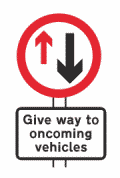I saw this story in The Press and Journal (a Scottish newspaper).
 Scottish councillors have told transport bosses to pull their fingers out and start fixing some of the roads in Aberdeen.
Scottish councillors have told transport bosses to pull their fingers out and start fixing some of the roads in Aberdeen.
Although clearly a very local issue in this instance, every newspaper across the land could easily generate the same story by talking to local residents and highlighting the appalling condition of many roads at the moment. The bad weather over the last two winters is the obvious primary cause, but that shouldn’t excuse those in charge from fixing things.
I had a pupil on test this afternoon, and the private roads around Colwick MPTC are in a very poor condition – so bad that the potholes are quite capable of causing serious damage. And in West Bridgford later I had to gingerly negotiate a sunken drain with massive pothole on Albert Road, just near the mini-roundabout.
In the meantime, Nottingham City Council is more concerned about farting with the road layouts to make driving more difficult. At present it is busy making Bath Street even more dangerous by making the pavement as wide as possible on the corner donw near the roundabout at the Bingo Hall. Apparently, this is an EU-funded programme called “connecting the Eastside” or something similar.
When you consider exactly what the “Eastside” is, you can’t help thinking that a very high wall would be better than what they are trying to do at the moment.
 Well done to Leanne, who passed with 5 driver faults this afternoon.
Well done to Leanne, who passed with 5 driver faults this afternoon. This
This  I see it every day. I’ve mentioned before the fiasco near Hollygirt School in Nottingham – it’s a private school, where the rules that normal people have to adhere to don’t apply. Just outside the school, on Cranmer Street, is a chicane system on a bend. It has signs at each end to tell you to give way to oncoming vehicles because you can’t see clearly.
I see it every day. I’ve mentioned before the fiasco near Hollygirt School in Nottingham – it’s a private school, where the rules that normal people have to adhere to don’t apply. Just outside the school, on Cranmer Street, is a chicane system on a bend. It has signs at each end to tell you to give way to oncoming vehicles because you can’t see clearly. You need to be doing a certain number of hours of work to cover your business costs. If you aren’t getting the hours then you have to do something about it.
You need to be doing a certain number of hours of work to cover your business costs. If you aren’t getting the hours then you have to do something about it.